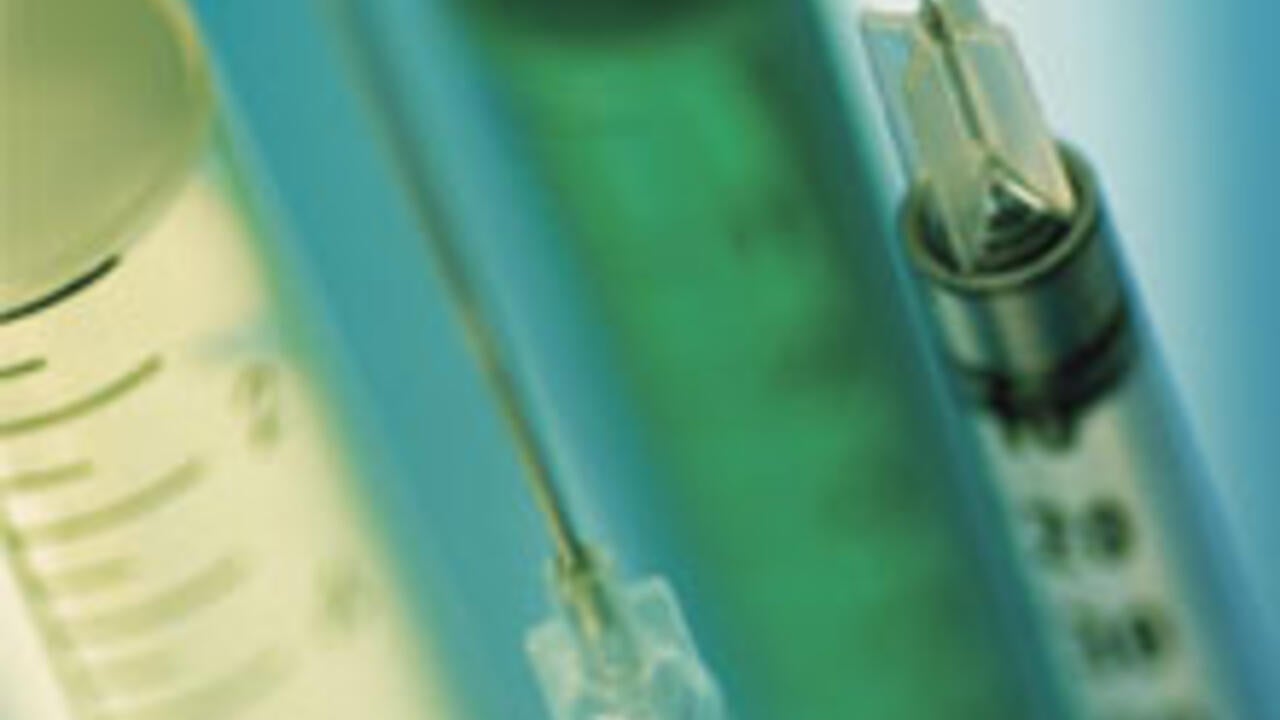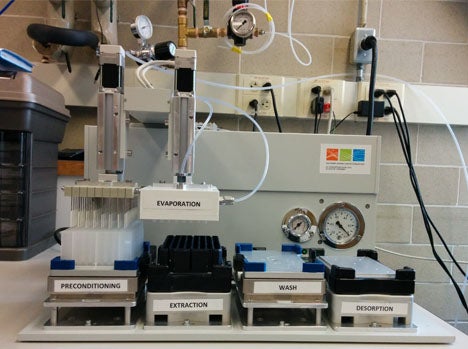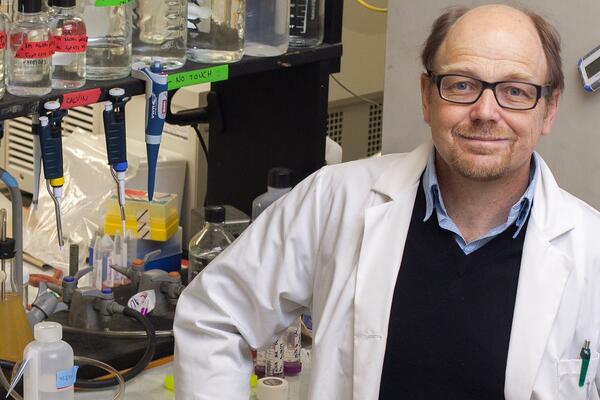
Waterloo chemists revolutionize drug testing in sport
New drug-testing method for banned substances will give results faster at major events like the Olympics

New drug-testing method for banned substances will give results faster at major events like the Olympics
By Katharine Tuerke Faculty of ScienceA new testing protocol developed by chemists at the University of Waterloo will revolutionize current drug testing methods at major sporting events like the Olympics.
A team of chemists from the Faculty of Science has developed a fully automated method for analyzing urine. The research, funded by the World Anti-Doping Agency (WADA) , appears in a recent issue of Analytica Chimica Acta.
“The challenge was to develop a robust method that could quantify hundreds of chemically different compounds,” said Ezel Boyaci, post-doctoral fellow and one of three lead authors of the study. “This automated method minimizes human error and speeds up processing time all in one test.”
WADA is faced with policing a growing list of banned substances in thousands of samples that need to be processed quickly. Officials at the Sochi Winter Olympics are expected to perform nearly 2,500 tests in 17 days, with a further 1,200 tests after the games.
Faster method processes sample in two minutes
The test allows officials to screen athletes across the drug spectrum with a single, automated analysis. It involves a 96-sample tray, and takes less than three hours to process, or two minutes per sample, on average.
The procedure simultaneously measures 110 doping compounds and their metabolites, such as narcotics, steroids, diuretics, hormones, stimulants, and cannabinoids. Current methods can only detect a few substances or similar classes of compounds at a time.

Waterloo's method to detect banned substances in urine employs solid phase microextraction (SPME), a technique that uses a solid coating to selectively extract specific substances. Because SPME covers so many compound classes, it can also cover substances that will appear later on the World Anti-Doping Agency's growing list.
Method can test older samples for new banned substances
“Retrospective studies for substances that we didn’t know about at the time will be easier with our method,” said post-doctoral fellow Angel Rodriguez-Lafuente, another lead author on the study.
The method meets performance values of WADA and is ready for the next stage of clinical trials. Next, the chemists hope to develop similar detection methods for prohibited substances in blood and saliva samples.
The research team consisted of Professor Janusz Pawliszyn and post-doctoral fellows Ezel Boyaci, Krzysztof Gorynski, Angel Rodriguez-Lafuente and Barbara Bojko. Professor Pawliszyn holds a Canada Research Chair in New Analytical Methods and Technologies.

Read more
Here are the people and events behind some of this year’s most compelling Waterloo stories

Read more
Discovery of a thick atmosphere on a lava world reshapes our understanding of rocky exoplanets

Dr. Brian Dixon, professor of biology at the University of Waterloo says there is a link between cold weather and getting sick. (University of Waterloo)
Read more
Waterloo researcher shares why we get sick when the mercury dips
The University of Waterloo acknowledges that much of our work takes place on the traditional territory of the Neutral, Anishinaabeg, and Haudenosaunee peoples. Our main campus is situated on the Haldimand Tract, the land granted to the Six Nations that includes six miles on each side of the Grand River. Our active work toward reconciliation takes place across our campuses through research, learning, teaching, and community building, and is co-ordinated within the Office of Indigenous Relations.